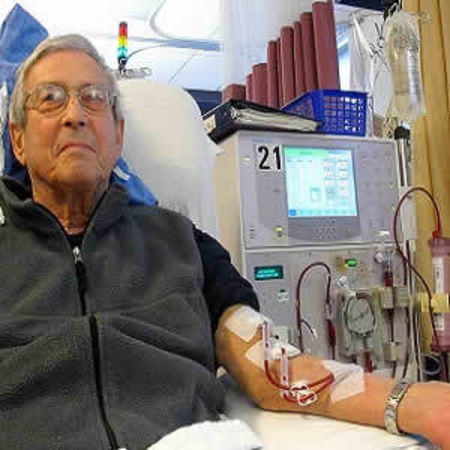Peritoneal dialysis (PD) may be a feasible, safe, and complementary alternative to haemodialysis not only in the chronic setting, but also in the acute setting, according to a review in the journal Seminars in Nephrology. PD provides an efficient way to correct metabolic, electrolyte, acid-base, and volume disturbances generated by acute kidney injury (AKI) and it can be used as a renal-replacement therapy (RRT) modality to treat AKI, both in and out of the ICU setting, the report says.
See Also: Renal Replacement Therapy: Practical Recommendations
Advantages of Acute PD
PD previously was widely accepted for AKI treatment, but its practice decreased in favour of other types of extracorporeal therapies. There is renewed interest in PD to manage AKI patients and PD now frequently is used in developing countries because of its lower cost and minimal infrastructural requirements. Studies from these countries have shown that, with careful thought and planning, critically ill patients can be treated successfully using PD.
Some of the classic limitations of PD use in AKI, such as a high chance of infectious and mechanical complications and poor metabolic control, have been overcome with the use of cyclers, flexible catheters, and a high volume of dialysis fluid. However, in developing countries the infrastructure for quality research often is lacking and the result has been limited evidence on standardised treatment regimens such as indications, dosing, and technical failure and mortality. The recent publication of the International Society for Peritoneal Dialysis guidelines (see below) for PD in AKI have tried to address these issues and provide an evidence-based standard by which to initiate therapy.
It should be noted that advances in technology now allow for the treatment of high-risk patients in whom RRTs were precluded or contraindicated in the past. The various modalities of acute renal-replacement therapy present advantages and disadvantages under specific circumstances; the spectrum of therapies for AKI therefore should be considered more as a continuum than as a series of modalities to be compared with each other.
Guidelines
The significant variability of practice patterns published in the literature led the International Society of Peritoneal Dialysis (ISPD) to develop guidelines for PD in AKI to guide practitioners, many of whom are non-nephrologists, how to perform acute PD. The guidelines presented the recommendations according to the GRADE criteria, looking at “best practice” as well as the “minimum standard” expected in resource-poor environments.
The guidelines give a 1b recommendation that PD is a suitable modality for treatment of AKI, giving confidence to practitioners that offering PD in this scenario is safe and effective. For example, the ISPD guidelines strongly recommend that flexible PD catheters are inserted at the bedside by nephrologists to prevent delays in initiating acute PD while waiting for operating room time, and so forth.
Controversies
A number of questions have been raised about the appropriateness of PD for AKI, especially because it may not be the most efficient therapy available: clearance per exchange can decrease if a shorter dwell time is applied, and insufficient clearance may be observed in large-sized and severely hypercatabolic patients. Fluid removal may be unpredictable, and the risk of infection and possible issues with mechanical ventilation all add to this debate.
PD is relatively contraindicated in patients with recent abdominal surgery, adynamic ileus, intra-abdominal adhesions, peritoneal fibrosis, or peritonitis. In many resource-poor countries, however, where there is no alternative, PD still may be life-saving in these patients, albeit at higher risk.
Another possible limitation of PD in AKI is that associated protein losses may aggravate malnutrition. Protein losses as high as 48 g/d have been reported, however, many reports have documented maintenance of serum albumin levels. Protein supplementation, either enteral or parenteral (1.5 g/kg/d), has been recommended for AKI patients on PD.
Source: Seminars in Nephrology
Image Credit: Anna Frodesiak
References:
Ponce, D. Balbi, A. Cullis, B. (2017) Acute PD: Evidence, Guidelines, and Controversies. Seminars in Nephrology doi.org/10.1016/j.semnephrol.2016.10.011
Latest Articles
haemodialysis, acute kidney injury, Peritoneal dialysis, renal-replacement therapy
Peritoneal dialysis (PD) may be a feasible, safe, and complementary alternative to haemodialysis not only in the chronic setting, but also in the acute setting, according to a review in the journal Seminars in Nephrology.



























